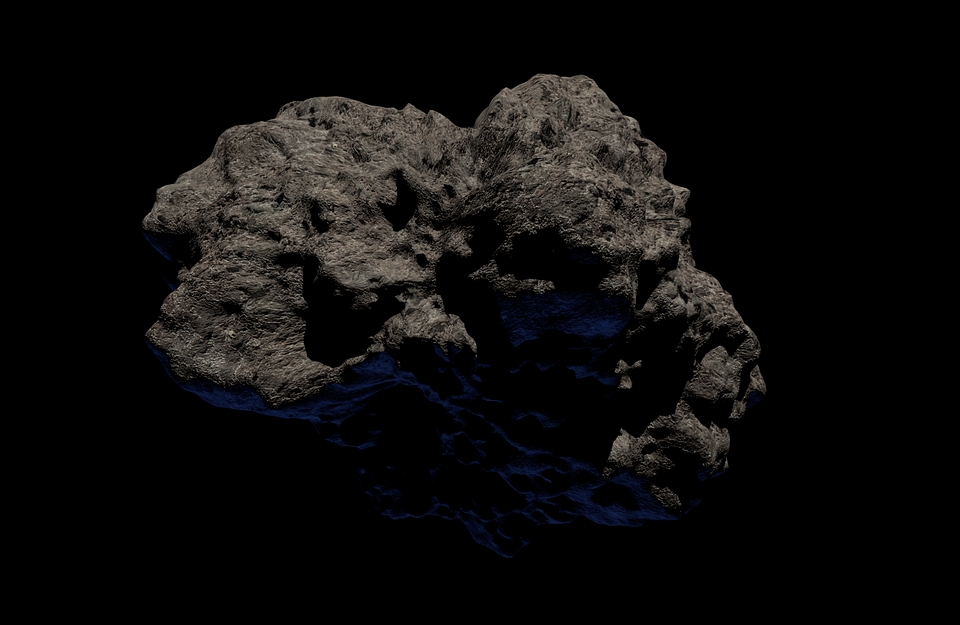Aside from being monitored in their close-approaches, asteroids are also examined by scientists and space agencies as they can shed more light on the universe. NASA recently made a breakthrough in asteroid Bennu, when they discovered proof that there were bodies of water that once existed on the surface.
The agency’s Osiris-REx spacecraft found traces of carbon-bearing organic material on a wide scale on the surface of asteroid Bennu. This process on Earth happens through flowing rivers in a span of millions of years. This discovery suggests that the massive asteroid was once part of a larger cosmic body that had a lot of flowing water. NASA is expected to collect samples from asteroid Bennu this month which will come back to Earth by 2023 for analysis. The agency will analyze the samples to see if there are signs of organic compounds or traces of compounds that indicate life.
“The abundance of carbon-bearing material is a major scientific triumph for the mission,” said principal investigator Dante Lauretta of the University of Arizona. “We are now optimistic that we will collect and return a sample with organic material - a central goal of the OSIRIS-REx mission.”
The researchers analyzed images from the spacecraft’s visible and infrared spectrometer where they found “veins” made of carbonate on the surface of Bennu. Their findings were published in the journal Science. “If the veins on Bennu are carbonates, fluid flow and hydrothermal deposition on Bennu’s parent body would have occurred on kilometer scales for thousands to millions of years.”
Meanwhile, an astronomer was able to solve the mystery behind the so-called “mini-moon” that was first detected approaching Earth. NASA astronomer Paul Choda revealed that the object approaching Earth was not an asteroid or a mini-moon, but rather a remnant of an old rocket from an unsuccessful mission.
Choda explained that from the way the object is orbiting the Sun, it could not be considered an asteroid because it moves differently around the star. Initially referred to as 2020 SO, Choda revealed that the “asteroid” was actually a Centaur upper rocket stage that brought NASA’s Surveyor 2 lander to the Moon.



 Genetic diseases: How scientists are working to make DNA repair (almost) a piece of cake
Genetic diseases: How scientists are working to make DNA repair (almost) a piece of cake  Black hole, neutron star or something new? We discovered an object that defies explanation
Black hole, neutron star or something new? We discovered an object that defies explanation  Archeoastronomy uses the rare times and places of previous total solar eclipses to help us measure history
Archeoastronomy uses the rare times and places of previous total solar eclipses to help us measure history  Orbital resonance − the striking gravitational dance done by planets with aligning orbits
Orbital resonance − the striking gravitational dance done by planets with aligning orbits  The brightest object in the universe is a black hole that eats a star a day
The brightest object in the universe is a black hole that eats a star a day  How do airplanes fly? An aerospace engineer explains the physics of flight
How do airplanes fly? An aerospace engineer explains the physics of flight  Alpha, beta, theta: what are brain states and brain waves? And can we control them?
Alpha, beta, theta: what are brain states and brain waves? And can we control them?  The brain is the most complicated object in the universe. This is the story of scientists’ quest to decode it – and read people’s minds
The brain is the most complicated object in the universe. This is the story of scientists’ quest to decode it – and read people’s minds  If life exists on Jupiter’s moon Europa, scientists might soon be able to detect it
If life exists on Jupiter’s moon Europa, scientists might soon be able to detect it  The rising flood of space junk is a risk to us on Earth – and governments are on the hook
The rising flood of space junk is a risk to us on Earth – and governments are on the hook  What is minoxidil, the anti-balding hair growth treatment? Here’s what the science says
What is minoxidil, the anti-balding hair growth treatment? Here’s what the science says  Larger and more frequent solar storms will make for potential disruptions and spectacular auroras on Earth
Larger and more frequent solar storms will make for potential disruptions and spectacular auroras on Earth  Tatahouine: 'Star Wars meteorite' sheds light on the early Solar System
Tatahouine: 'Star Wars meteorite' sheds light on the early Solar System  Could a telescope ever see the beginning of time? An astronomer explains
Could a telescope ever see the beginning of time? An astronomer explains  Spacesuits need a major upgrade for the next phase of exploration
Spacesuits need a major upgrade for the next phase of exploration 































